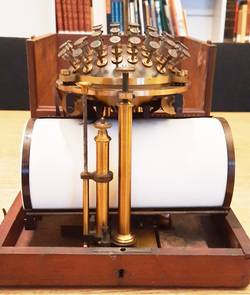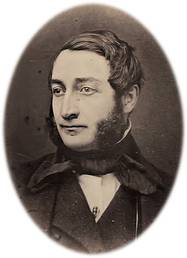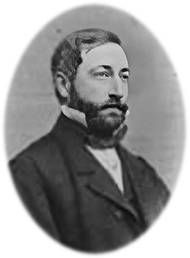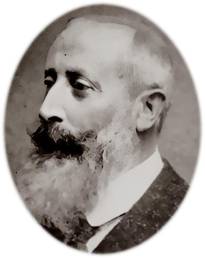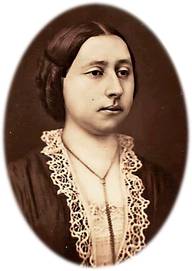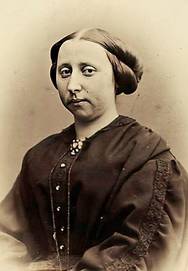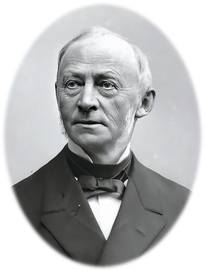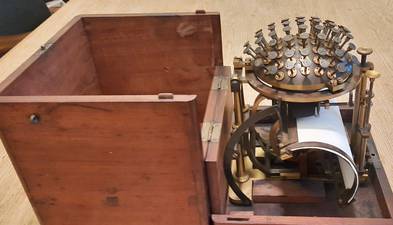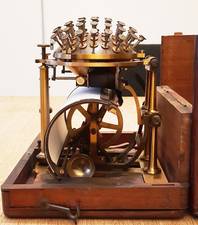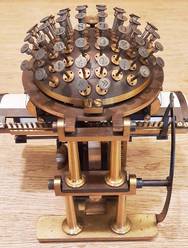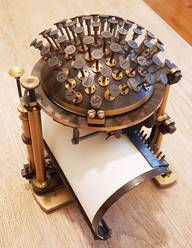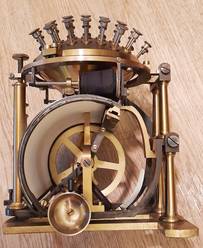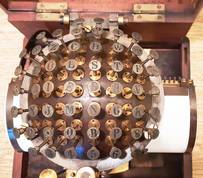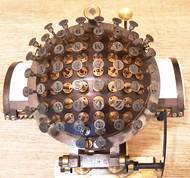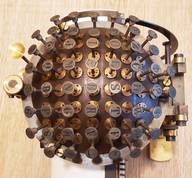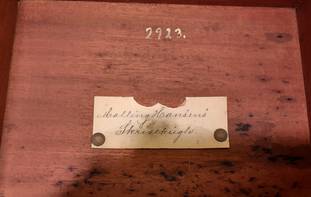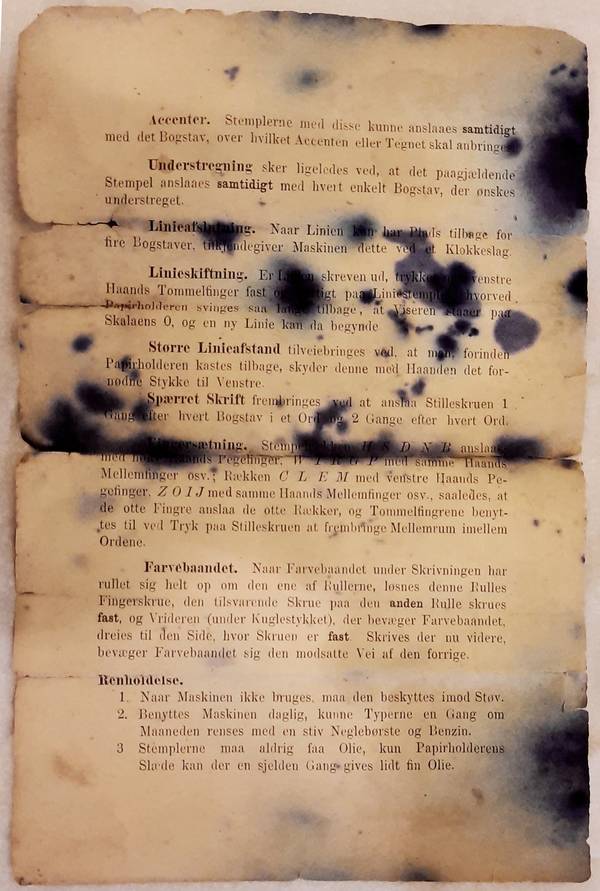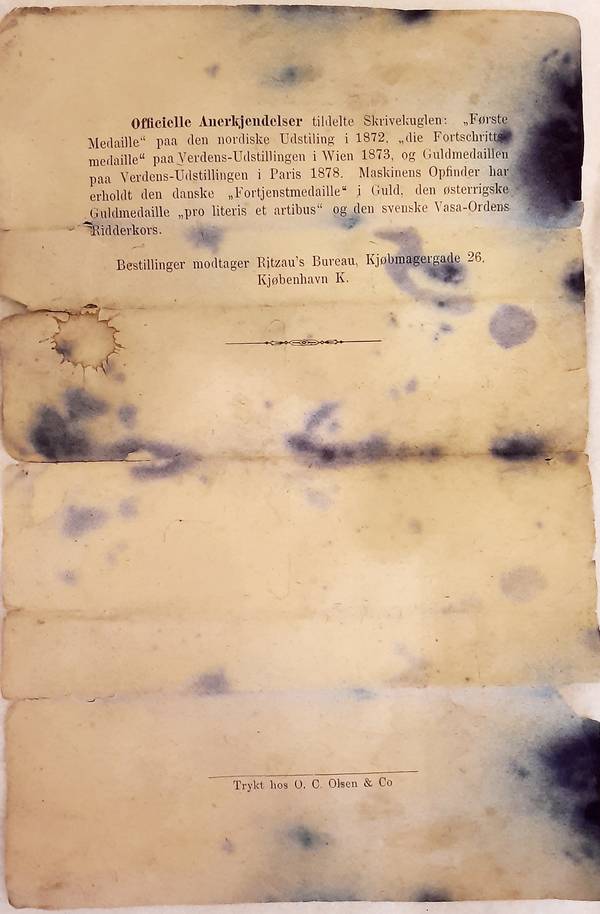The Writing Ball of Svendborg Museum.
Research, photos and text by Jørgen Malling Christensen.
The writing ball owned by Svendborg Museum is known to us as an 1878 portable ball with ribbon, with its original mahogany box and serial number 107, manufacture number 4.
On October 22, 2021, I was kindly given access to this wonderful item. I was received by the Head of the Museum, Esben Hedegaard, who generously allowed me ample time to inspect, touch (with gloves) and photo it. Naturally, this precious item is normally kept stored under safe conditions and is not exhibited to the public.
I found a writing ball, which appeared in good condition, with 54 keys, all of which are moving and functioning. However, the keys are quite worn on the surface, and this writing ball bears the hallmark of having been used a lot. My attached photos will further illustrate the condition of the writing ball. My – amateur – impression is that it is in working condition or, at least, could be restored back into full working condition. I saw no visible damage, and it has its original ribbon. I did not attempt to type with it – for fear of damaging it.
In addition, it comes with the original “Brugsanvisning”, i.e. ‘Directions for use’, - although, as can be seen from the photos, they are very much worn and smudged by time and by use (see the photos).
The history of this writing ball is linked to one of the most well-known and prominent of Svendborg families, namely the Weber family. As the provenance is certified and the family is so illustrious in the history of Svendborg, I will describe it in some detail.
The founder of this industrial, horticultural and shipbuilding dynasty was Theobald Christian Frederik Weber, 1823-1886. With his wife, Sofie Emilie Meldola, 1833-1878, he had 10 children. In 1851 Weber started a factory for the production of mirror glass, situated near the town of Haderslev. He became a pioneer in terms of producing soda, used for glass polishing. The soda was made from cryolite[1], mined by C.F. Tietgen in Greenland as from 1854.
Weber diversified his investments and in 1859 established a cryolite factory outside Copenhagen. However, this venture failed financially, and he abandoned it to his creditors in 1866. That year he settled down in Svendborg, where he bought a large estate and over the years developed pioneering methods in fish-farming, poultry farming, fruit orchards, and the production of cider, marmalade and fruit wine.
He also started a large shipbuilding yard, producing wooden ships. The ships from his yard were world famous for their quality. Still to this day the town of Svendborg hosts a yearly regatta for sailing ships, and the first prize is the ‘Sophus Weber Cup’, named after his son.
Old man Weber had a number of imposing villas built for his large and growing family – ‘Bella Vista’, ‘Tårnborg’ and ‘Svea’, all of which still prominent landmarks of Svenborg.
After Theobald C.F. Weber’s death in 1886, some of his sons took over the company operations, in particular Sophus Theodorus Holst Weber, 1859-1941[2].
The Svendborg Museum protocol regarding received items shows (see the photo), that the writing ball owned by the Weber family was donated to the museum by Sophus Weber and registered as item no. 2923: “Skrivekugle med kasse, Malling-Hansen” (writing ball with box, Malling-Hansen), and I was verbally informed by the Museum Head, that the year of this donation was 1908.
Since this writing ball – serial number 107, manufacture number 4 – is an 1878 model, there is a high probability that it was purchased by the old Weber, Theobald C.F., before his death in 1886 and later on used also by his sons and daughters.
[1] JMC: The chemical name is ‘natriumhexafluoroaluminat’, Na3AIF6. Cryolite was formerly used as a catalyst in the electrolytic processing of aluminium and for producing caustic soda. The cryolite resources in Greenland are by now depleted.
[2] JMC: Not to be confused with a prominent Danish physicist and consul bearing the exact same name, born 1886, died 1971.

